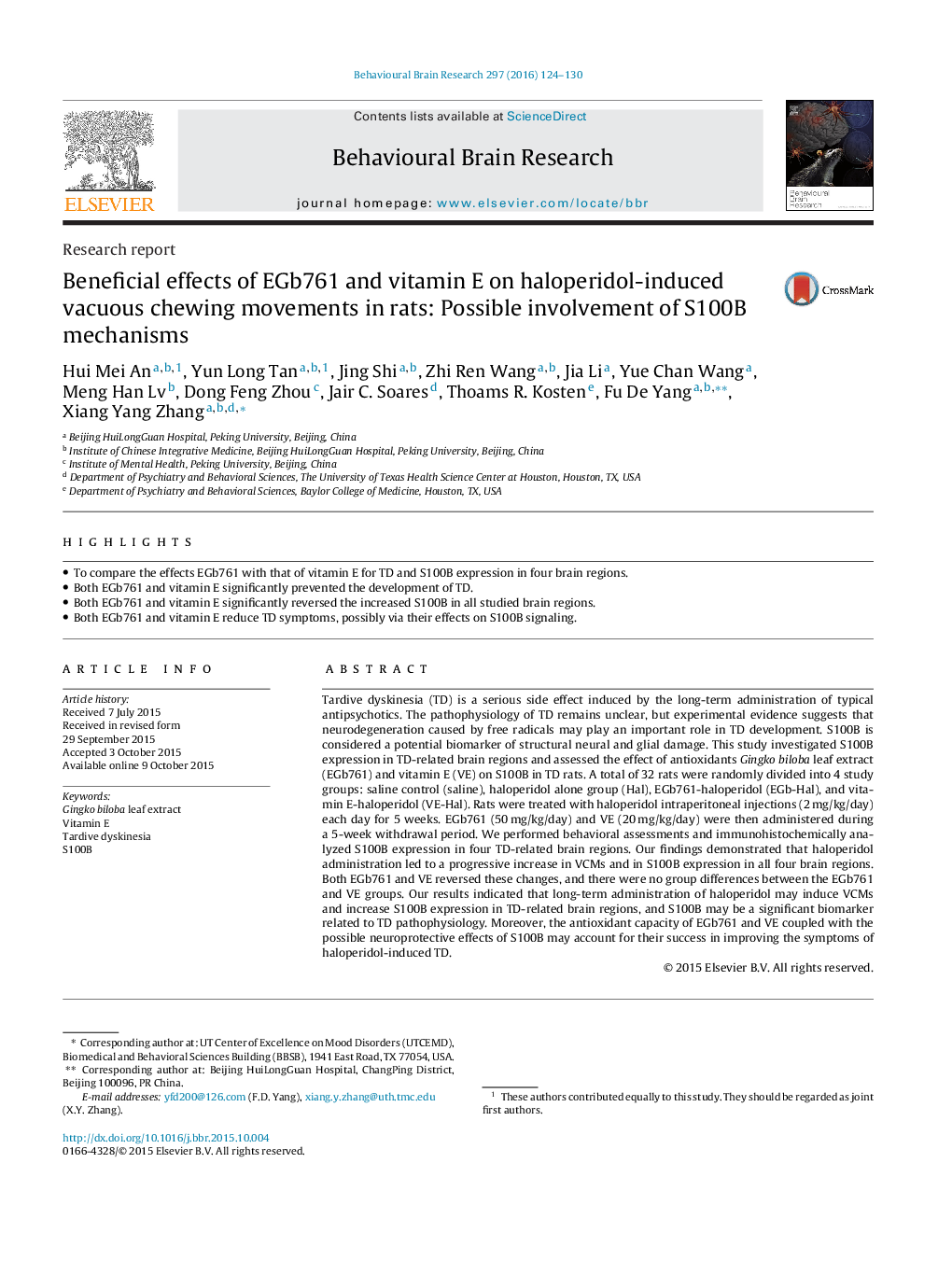| کد مقاله | کد نشریه | سال انتشار | مقاله انگلیسی | نسخه تمام متن |
|---|---|---|---|---|
| 6256377 | 1612935 | 2016 | 7 صفحه PDF | دانلود رایگان |

- To compare the effects EGb761 with that of vitamin E for TD and S100B expression in four brain regions.
- Both EGb761 and vitamin E significantly prevented the development of TD.
- Both EGb761 and vitamin E significantly reversed the increased S100B in all studied brain regions.
- Both EGb761 and vitamin E reduce TD symptoms, possibly via their effects on S100B signaling.
Tardive dyskinesia (TD) is a serious side effect induced by the long-term administration of typical antipsychotics. The pathophysiology of TD remains unclear, but experimental evidence suggests that neurodegeneration caused by free radicals may play an important role in TD development. S100B is considered a potential biomarker of structural neural and glial damage. This study investigated S100B expression in TD-related brain regions and assessed the effect of antioxidants Gingko biloba leaf extract (EGb761) and vitamin E (VE) on S100B in TD rats. A total of 32 rats were randomly divided into 4 study groups: saline control (saline), haloperidol alone group (Hal), EGb761-haloperidol (EGb-Hal), and vitamin E-haloperidol (VE-Hal). Rats were treated with haloperidol intraperitoneal injections (2Â mg/kg/day) each day for 5 weeks. EGb761 (50Â mg/kg/day) and VE (20Â mg/kg/day) were then administered during a 5-week withdrawal period. We performed behavioral assessments and immunohistochemically analyzed S100B expression in four TD-related brain regions. Our findings demonstrated that haloperidol administration led to a progressive increase in VCMs and in S100B expression in all four brain regions. Both EGb761 and VE reversed these changes, and there were no group differences between the EGb761 and VE groups. Our results indicated that long-term administration of haloperidol may induce VCMs and increase S100B expression in TD-related brain regions, and S100B may be a significant biomarker related to TD pathophysiology. Moreover, the antioxidant capacity of EGb761 and VE coupled with the possible neuroprotective effects of S100B may account for their success in improving the symptoms of haloperidol-induced TD.
Journal: Behavioural Brain Research SreeTestContent1 - Volume 297, 15 January 2016, Pages 124-130